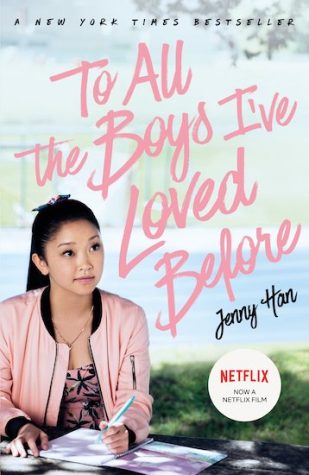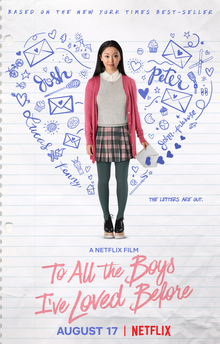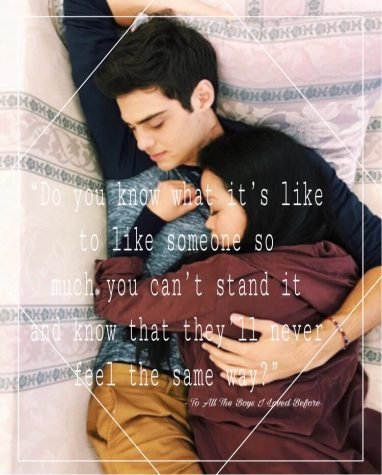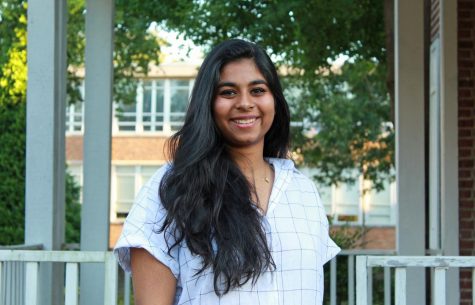“To All the Boys I Loved Before” Book Vs. Movie Review
August 27, 2018
“Love is scary: it changes; it can go away. That’s the part of the risk. I don’t want to be scared anymore.” – To All The Boys I’ve Loved Before.

*SPOILERS*
Movie nights with many selections tend to overwhelm watchers, but if you are looking for a movie that fills your stomach with butterflies and gets your daily dose of cliche teen romance, I recommend watching “To All the Boys I’ve Loved Before.”
“To All the Boys I’ve Loved Before” by Jenny Han is a book adapted into a movie released by Netflix on Aug. 17, turning it into an instant classic teen romance for generations after ours to enjoy.
Lara Jean writes letters to five guys in hopes of her feelings for them would go away. One day, the letters go missing, and for some odd reason, Lara Jean wrote the addresses of the five on the letters. The letters reach the five boys, and things take a weird turn. With fake boyfriends, ski trips and jealous exes, this movie is filled with moments of craziness which can only happen in movies and with moments of relatability to some teenagers. Like most teen romance stories, it has the trope of the main character being oblivious. However, one big difference in this movie compared to all the other teen romances is the inclusion of a main character and actor who is an Asian-American.

One significant part of the book Jenny Han didn’t want to lose was that the main character had to be an Asian-American, and most producers wanted to change that aspect of it. With more Asian-American representation in movies such as the recent release of “Crazy Rich Asians,” which features a majority Asian-American cast, movie producers are becoming more open to the idea of diversity in main characters. Historically, Hollywood has undermined the importance of ethnic representation on screen through methods of “whitewashing.” One example of whitewashing was when Scarlett Johansson played the role of Motoko Kisangani in “Ghost in the Shell,” which was originally a Japanese character, but the producers brought in a white woman, changing the cultural significance of the character.
The book series, on the other hand, is sadder because *spoiler* it doesn’t have a definite ending. The first book ends on a cliffhanger, with Lara Jean making a resolution to tell Peter how she really feels. But a character telling herself that she should be brave is a bit anticlimactic for a rom-com. To give the movie that heart-swelling, cue-the-music conclusion, the movie skipped ahead to the beginning of “P.S. I Still Love You” (second book).
Another notable difference between the movie and the book is that Josh Sanderson, Lara Jean’s sister’s ex-boyfriend, kisses and confesses he liked her first and there is a love triangle between Josh, Peter and Lara Jean in the book.
In the movie, though, he doesn’t confess or kiss, but movie watchers can assume that he looks at her with love. The second difference is the scene when Peter and Lara Jean had their first kiss; the book goes on to tell us that the two of them were the last kids waiting to be picked up at a friend’s house. They were sitting close to each other when Peter told Lara Jean that she smelled nice. That’s when, out of the blue, he landed one right on her lips. We can assume that this is also a reason that Peter says yes to the idea of being Lara Jean’s fake boyfriend. The third is when the two of them were making the “contract” of being in a fake relationship, which Peter suggested in lieu of not being able to kiss. The other PDA is when he wanted to be allowed to put a hand in Lara Jean’s back pocket (that perv). He also writes a rule that she won’t make him watch rom-coms, and she writes a rule that he won’t take her to see action movies. Instead, in the movie, the contract dictates that Peter will watch certified rom-com Sixteen Candles and Lara Jean will watch Fight Club.

The movie has a feeling of nostalgia to the adults who remember their teen years and how it felt to be dating for the first time, and it shows the teenagers now how love can come in unexpected ways. The movie does an amazing job at making the watcher happy and satisfied until the very end, unlike the first book. It also shows diversity, incorporating Korean culture into the movie. The movie has become one of my top teen romance movies to watch, considering that I already watched it two times by now. It is also an amazing book that makes you want to read the whole series in one sitting.
“To All the Boys I’ve Loved Before” is a movie that shows more diverse characters and represents more minorities in Hollywood cinema. I recommend you to watch this dorky movie because it gives you the cinematography and the eye candy actors most teenagers want to see. It gives you hope on finding your high school sweetheart.








